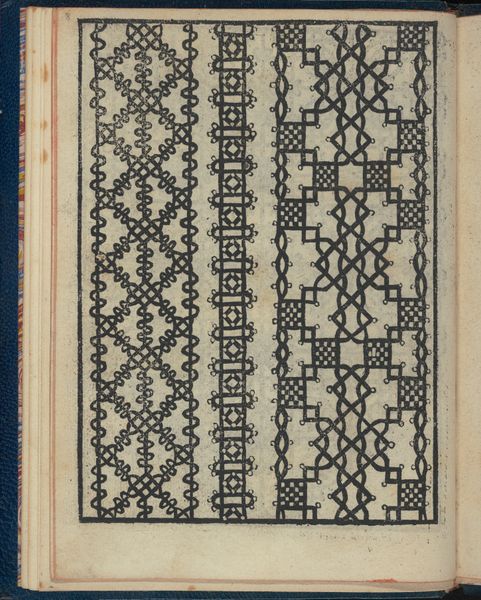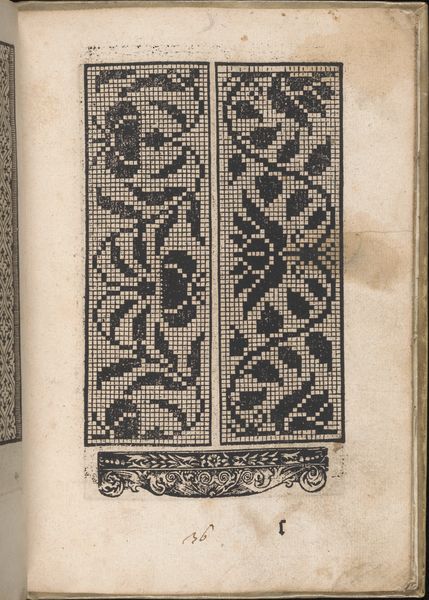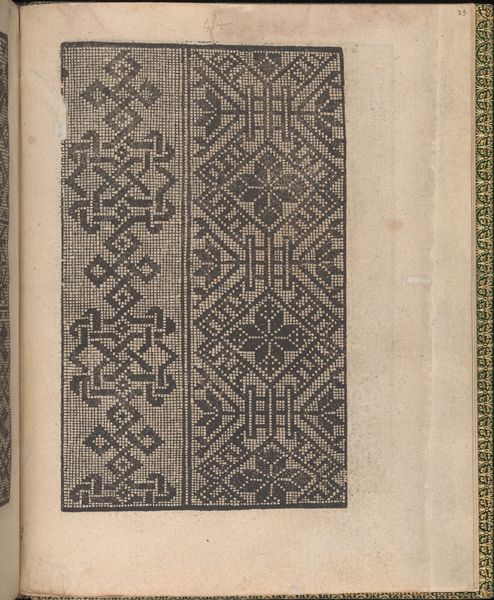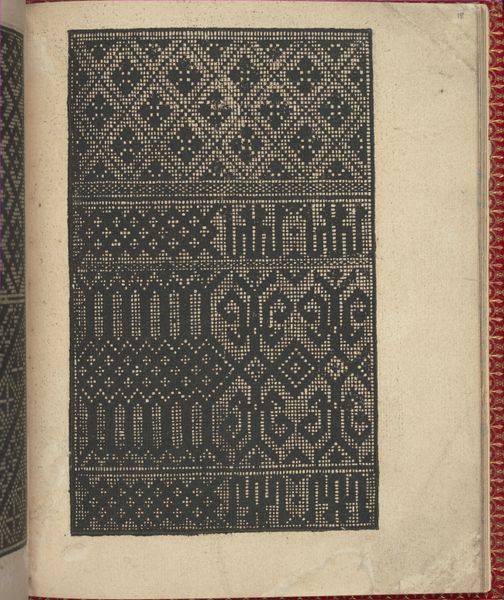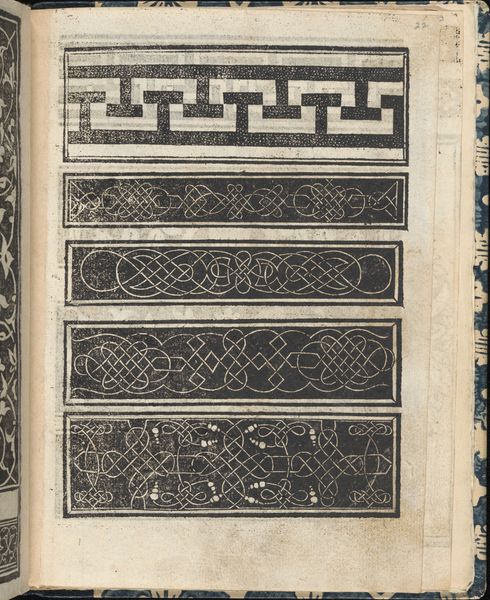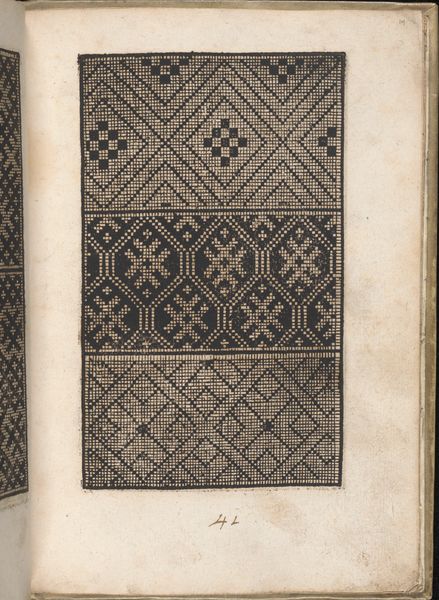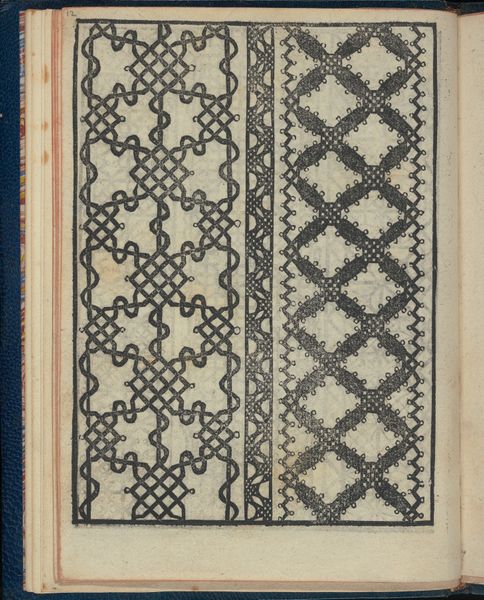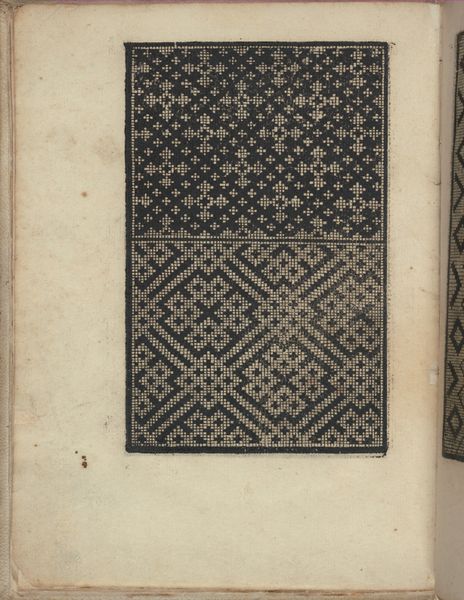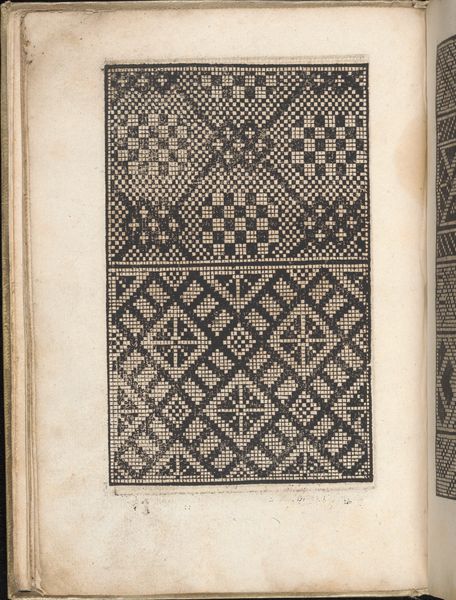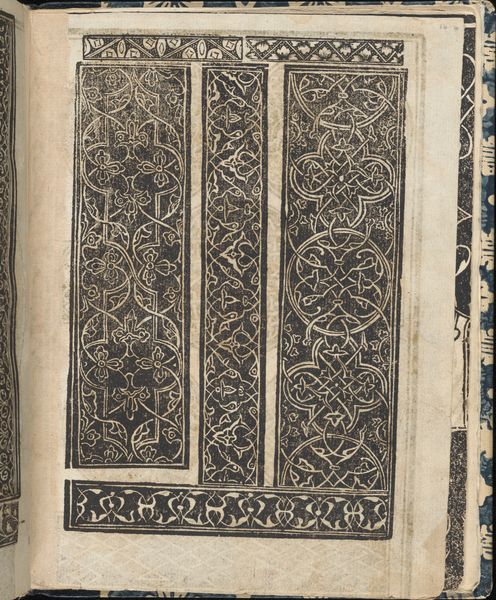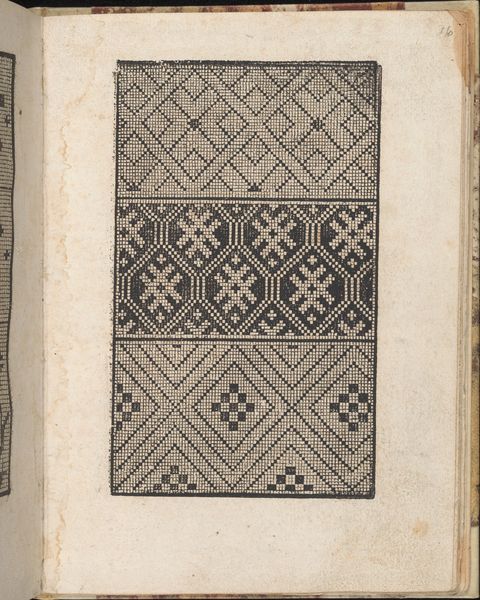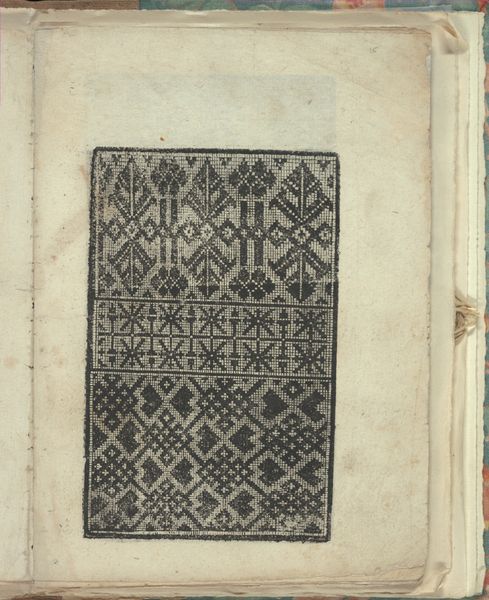
Ce est ung tractat de la noble art de leguille ascavoir ouvraiges de spaigne... page 12 (recto) 1527 - 1540
0:00
0:00
drawing, print, paper, woodcut
#
drawing
# print
#
paper
#
11_renaissance
#
woodcut
Dimensions: Overall: 6 7/8 x 5 11/16 in. (17.5 x 14.5 cm)
Copyright: Public Domain
Editor: This is a page, specifically page 12, from Willem Vosterman's "Ce est ung tractat de la noble art de leguille ascavoir ouvraiges de spaigne..." It's a woodcut print on paper, dating back to between 1527 and 1540. The crisp patterns feel so modern even though they are centuries old! What can you tell me about the significance of this kind of printed pattern book? Curator: This print offers us a glimpse into the fascinating intersection of art, craft, and commerce in the Renaissance. Pattern books like this one served as crucial tools for disseminating design ideas. What do you think the phrase "noble art de leguille" alludes to, given the image? Editor: Needlework, perhaps? Curator: Precisely. These patterns were not merely decorative; they represented social aspirations. The ability to create intricate needlework signified refinement and status, reflecting the socio-economic hierarchies of the time. Note the stark contrast of this print to illuminated manuscripts of the early Renaissance. This shows the democratization of access. How do you think this availability might have shaped public perception of art and artistry? Editor: I see that such books helped shape the visual culture beyond just the wealthy elite, opening up participation in artistic trends to a wider audience. It challenges the idea of art being confined to the walls of churches and palaces. Curator: Exactly! Printed patterns impacted the economics and perception of female artisanal work, but consider the geographic specification. These were works "de spaigne," of Spain. That has implications about consumerism. Were there sociopolitical aspirations implied in making art in that style, perhaps suggesting broader allegiances or new tastes? Editor: That’s fascinating. It’s amazing to consider how this single page represents such a complex web of social and economic factors. I will never look at these the same way again! Curator: Indeed. These patterns reveal the profound social role of art in shaping identities and artistic ambition, shifting the direction of social history as a result of wider participation.
Comments
No comments
Be the first to comment and join the conversation on the ultimate creative platform.
